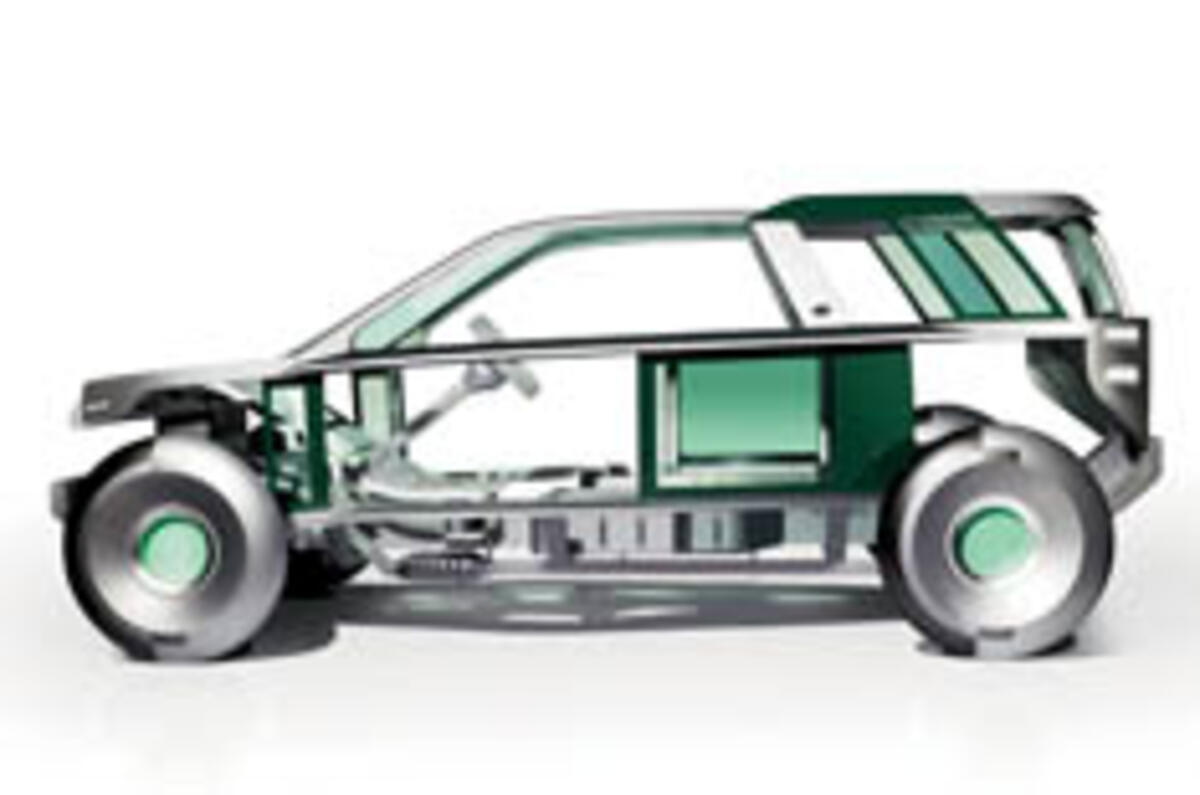This Land Rover Land_e, shown at Geneva, is a showcase for eight technologies that will appear in production Land Rovers by 2010.
Grouped under the title of e-Terrain, all focus on helping Land Rovers tread ever more lightly; Land Rover claims that collectively these features result in a 30 per cent improvement in fuel economy, reduce CO2 emissions for a Freelander-sized vehicle to 150g/km and eliminate wheel slippage. It has taken the last nine years for Land Rover’s cross-range C02 emissions to fall by 13 per cent; these are major gains.
The most intriguing system is the Electric Rear Axle Drive. As the name states, this is an electric motor driving the rear axle, built into the rear differential. Up to 20mph, it is the only power source. Drive goes to the front wheels under normal conditions and to the rear as needed.
The engine is started as needed by a starter/alternator that enables it to be cut and restarted easily when stationary. This alone reduces CO2 emissions by 20 per cent. The electric motor is also used by the Terrain Response System when off-roading for extra low-down torque. That system will gain a sixth mode to improve fuel economy on-road by softening throttle response and changing up early.
The rear axle system is linked to a lithium-ion battery pack, charged by braking energy. In light braking the driveshafts and propshaft transfer energy from the wheels to the battery. The propshaft is part of a ‘Seamless re-connect’ system, which disconnects drive to the rear wheels when cruising. Land Rover claims it can reconnect to the rear axle (and so to some of the best 4x4 ability in the business) more quickly than rival systems and that it reduces wheel slippage to almost nothing.
Reduction is a theme throughout the Land_e, as with the system that sends heat from the exhaust to warm the engine and gearbox up more quickly and controls elements in the radiator core. It can close them and so reduce drag at speed and enable faster warming-up. Running an engine as close as possible to its optimum temperature results in further emissions and fuel savings.
All the electrical systems (including electric steering) are monitored by a system that uses them in the most efficient way possible. Land Rover's vision of future models emitting less C02 and using less fuel on-road, whilst being as capable, more efficient and less damaging off it demands innovations such as these if the sector's sales growth is to continue.




Add your comment